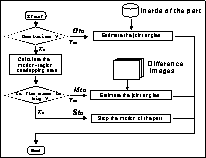
Figure 1: Flowchart of processing a node at each frame
Publication,
Research,
Docs and Info,
KAMEDA



This section describes the model matching algorithm we proposed. It utilizes the node modes and takes the relationship between the difference images and the projections of the human model into consideration. The process deals with a node one by one at each frame. The flowchart of the matching algorithm for a node is as shown in Figure 1.

Figure 1: Flowchart of processing a node at each frame
Suppose the process comes to the frame n.
First, check whether the current node is in the occlusion mode or not. If it is in the occlusion mode, the joint angle is estimated according to the prediction using the inertia discussed before.
Then, search  which maximizes the area size
which maximizes the area size  by varying the joint angle
by varying the joint angle  . If the
difference image is the first one in the image sequence (that means n
= 2),
. If the
difference image is the first one in the image sequence (that means n
= 2),  is formulated as the equation
(6). Otherwise, it is defined as the equation
(7).
is formulated as the equation
(6). Otherwise, it is defined as the equation
(7).
In the formulations,  indicates the region
projected by the node p at time
indicates the region
projected by the node p at time  .
.  is an union
region of the projections of the nodes that have been estimated at
time
is an union
region of the projections of the nodes that have been estimated at
time  . And
. And  is a projection of the
human model at time
is a projection of the
human model at time  that is given to the system in advance.
that is given to the system in advance.
 is an exclusive-or operator between two binary regions.
is an exclusive-or operator between two binary regions.
If  is larger than the threshold
value
is larger than the threshold
value  , the node p is determined to be moving, otherwise
stationary. The threshold
, the node p is determined to be moving, otherwise
stationary. The threshold  is introduced to remove the influence
of the noise occurred in the calculation of the difference.
If the node is determined to be in the moving mode, the joint angles
of the node is set to
is introduced to remove the influence
of the noise occurred in the calculation of the difference.
If the node is determined to be in the moving mode, the joint angles
of the node is set to  . If the node is
determined to be in the stationary mode, the joint angles are set to
the predicted ones discussed in Section 3 and its
rotational speed is reset to zero so that it stands still.
. If the node is
determined to be in the stationary mode, the joint angles are set to
the predicted ones discussed in Section 3 and its
rotational speed is reset to zero so that it stands still.
After processing all the nodes in the model at one frame, the model matching algorithm goes to the next frame and continues the process until it comes to the end of the image sequence.


